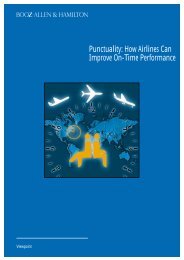The sentence
The sentence
The sentence
Create successful ePaper yourself
Turn your PDF publications into a flip-book with our unique Google optimized e-Paper software.
B. <strong>The</strong> bare infinitive or the ‘-ing’ form; the to-infinitive<br />
Verbs of perception: ‘Watch him draw/drawing’<br />
1. We can use a noun or pronoun object + the bare infinitive or –ing after these verbs:<br />
feel, hear, listen to, look at, notice, observe, perceive, see, smell, watch.<br />
2. <strong>The</strong> bare infinitive generally refers to the complete action:<br />
I watched a pavement artist draw a portrait in crayons. (i.e. from start to finish)<br />
3. <strong>The</strong> –ing form generally refers to an action in progress:<br />
I watched a pavement artist drawing a portrait in crayons. (i.e. I saw part of the action)<br />
4. We often use hear, observe, perceive and see in the passive + -ing or a to-infinitive:<br />
<strong>The</strong>y were seen waiting. <strong>The</strong>y were seen to climb through the window.<br />
‘Have’ + object: ‘Have the next patient come in’<br />
1. When we cause someone to do something for us, we use have + object + bare infinitive:<br />
Have the next patient come in, please.<br />
We may also use have + know, have + believe: I’ll have you know I’m the company secretary.<br />
2. We use have + object + -ing to refer to intended results, and unintended consequence:<br />
I’ll have you speaking English in no time. You’ll have the neighbors complaining.<br />
‘(Not) to’, ‘so as (not) to’, ‘in order (not) to’<br />
1. We use to, so as to and in order to to express purpose:<br />
I went to France to learn French. I went to France so as to/in order to learn French.<br />
We can also use the to-infinitive (not *so as to* *in order to*) to express sequence:<br />
We came home after our holidays to find the house neat and tidy. (= and found)<br />
2. We use not to for alternatives:<br />
I went to French not to learn Spanish, but to learn French.<br />
3. We use so as not to and in order not to to express ‘negative purpose’ (Not *to not*):<br />
I shut the door quietly so as not to/in order not to wake the baby.<br />
4. We use the to-infinitive after many verbs like appear, arrange, hope, ‘d like, and want:<br />
He told me to phone home. I hope to see you soon. I want to travel abroad.<br />
Note the difference in meaning between these negatives:<br />
He didn’t tell me to phone home. He told me not to phone home.<br />
C. Verb (+ noun/pronoun) + to-infinitive<br />
‘He can’t afford to buy it’<br />
Some verbs are followed only by a to-infinitive, not by –ing or that …:<br />
e.g. can(‘t) afford, aim, apply, fail, hasten, hurry, manage, offer, prepare, refuse, seek:<br />
He can’t afford to buy a car. (Not *He can’t afford buying/He can’t afford that …*).<br />
‘He advised me to take out a loan’<br />
<strong>The</strong>se verbs always have an object before the to-infinitive:<br />
advise, allow, entitle, forbid, invite, order, remind, (it) takes, teach, tell, warn:<br />
My bank manager advised me to take out a loan.<br />
98




